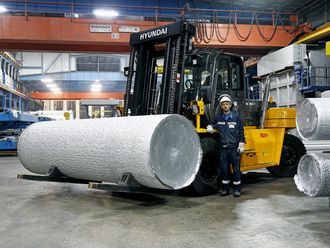
They come in all sizes, shapes and styles. Technological advancements, energy-efficient components and smart features have widened the home appliances galaxy tremendously, which can be a tricky labyrinth to negotiate for the uninformed. While features and performance are obviously the most important considerations when choosing an appliance, how it will look in your kitchen matters as well.
Here are some valuable tips from the country’s leading appliances and electronics retailers, who will not only guide you through the buying process and help you make an informed decision, but also demystify technical jargon, ensuring (see box below) you sound like a pro.
Keeping it cool
The first thing to keep in mind when in the market for a new refrigerator is that size does matter. The fundamentals of refrigerator shopping begin with figuring out how much space you have and what size you would like. Buying the right refrigerator is important, as not only does it prevent your food from spoiling, it is also one of the few appliances in your home that runs all day and night.
Anil Pillai, Head — Supra, Jumbo Electronics, says: “We often have customers returning the refrigerator they just bought because it doesn’t fit.” To avoid such disappointment, measure the height, width and depth of the space where you want to put your refrigerator. Don’t forget to measure how much space you need for the door to open all the way. This will determine the size of your refrigerator.
Next, pick a type. Do you want the freezer at the bottom, at the top, or would you rather go in for a side-by-side? Most refrigerators come with a single door, but there are two-, three- and four-door options available as well.
Other important features to consider include the ice maker in the freezer door, adjustable caddies and racks, movable door bins and pull-out shelves. “Bottom and top freezers are more energy efficient than side-by-side refrigerators or those with through-the-door water dispensers,” says Pillai.
When it comes to the interior, look for glass shelves rather than grates or grills. If there are sliding drawers or bins, check that they open and close smoothly. The fridge should have a spacious crisper. Don’t forget to check the storage space on the inside doors. Determine how the temperature is controlled inside the refrigerator, as digital controls let you be precise about how cool your food is kept.
Neelesh Bhatnagar, CEO at Emax, recommends buying a refrigerator with antibacterial interior coatings to help keep leftovers germ-free.
Staying hot
Can you remember the last time you reheated something on the stove instead of just sticking it into the microwave? Unlikely. But most of us remain oblivious to the various other functions and features of a microwave.
To start with, microwave ovens are of three types: basic heating ovens; ovens with grilling; and ovens that combine grilling and convection. The appliance you choose will depend largely on usage, and once you have decided upon that, here’s what else to keep in mind.
Pick a microwave oven that has inverter technology, as this feature provides true multiple-power levels. Another useful feature is an automatic sensor, also referred to as humidity sensor, says Bhatnagar. This determines if the food is cooked by measuring the steam in the oven. When the food is done, the oven switches off automatically. The sensor thus prevents food from being overcooked.
Irrespective of the model you choose, some basics to keep in mind, says Niranjan Gidwani, Deputy CEO at Eros Group, are the size and capacity, wattage, energy efficiency, safety and advanced features.
Soap and suds
Choose between automatic and semi-automatic, and front-loading and top-loading machines. Pillai says: “Understand your needs — do you need a washer-dryer combo? Do you have a lot of laundry? Do you wash heavily soiled clothes or delicate materials? Front-loaders are generally more eco-friendly as they use less energy and water, whereas top-loaders are easier to use.”
Another important aspect is the rotations per minute (RPM). The higher the RPM, the more energy-efficient the machine will be. Look for a speedy spin cycle as a faster cycle means more water will be extracted, and clothes will take less time to dry. Minimal water usage should be another concern, so compare how many gallons of water are consumed in an average wash cycle. Most machines use 40 gallons, but today’s green generation of machines can use as little as 15 gallons.
Bhatnagar says: “Many washing machines now include special sensors that will keep the wash load balanced even as the drum spins at high speeds, making the washer operate quietly. This is an excellent feature if your laundry room is located on the second floor or near a bedroom.”
A good scrub
All dishwashers will give you squeaky clean plates, but there are numerous other factors to consider. If you find the swoosh-swoosh sound of a wash cycle irritating, then look for models that offer extra-quiet motors and vibration-absorbing materials. Opt for an energy-efficient dishwasher with several cycles for different types of loads. See how many racks and baskets are available for stacking plates, glasses and cutlery.
Also consider buying a dishwasher with a stainless steel tub instead of low-end plastic or plastic-coated tubs, says Bhatnagar. Plastic has a tendency to stain and chip, whereas stainless steel is more durable, stain-free and more compatible with condensation-drying features.
But the essentials, says Gidwani, remain size, capacity, washing modes, automatic detergent dispensers, wash time and energy efficiency.












